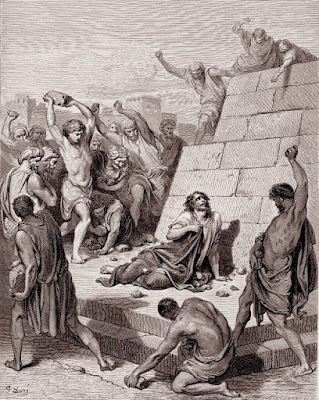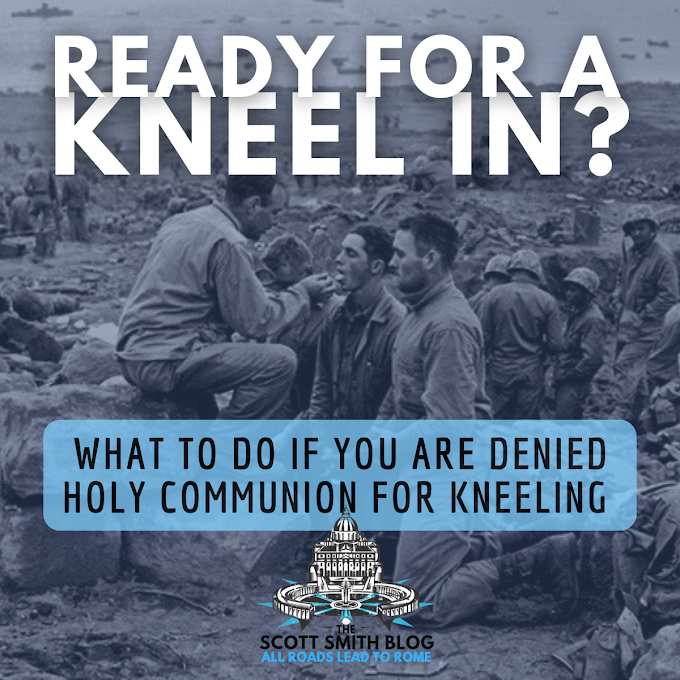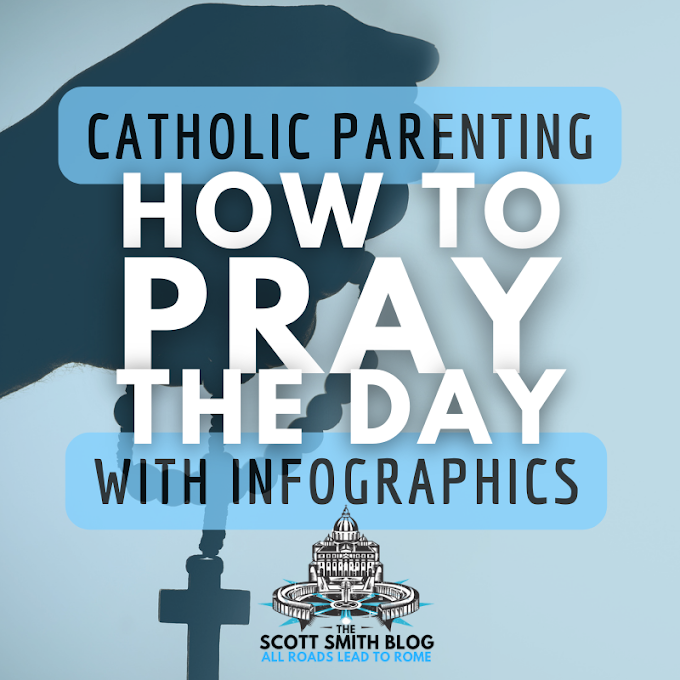Have you every thought about Near-Death experiences (NDEs) occurring in the Bible? I have! When you start looking, you realize they are all over the Bible.
I just had a new book published by Sophia Institute Press entitled Near-Death Experiences. It is a comprehensive treatment of near-death experiences from a Catholic point of view, including accounts of Heaven, Hell, and Purgatory from priests, popes, and the saints.
This article explores the following questions: Did St. Paul actually die and resurrect in the Bible? If so, was St. Paul's account of the "third heaven" a description of his Near-Death Experience?
Near-Death Experiences (NDEs) of the Bible
There is so much unexplored territory when it comes to NDEs. First off, almost all books on this subject are not Catholic.
Second, most NDE books only describes recent, contemporary accounts of near-death experiences. There is a long history of Catholic NDEs that goes back to the first centuries of the Church and Biblical times, as well.
This will be the first in a series of posts about Catholic and Biblical NDEs, all fruit of my research for my new book :)
Now, let's return to the question of St. Paul's NDE ...
What if St. Paul's Near-Death Experience was connected to that of another disciple? One that St. Paul had a hand in killing ...
Did St. Stephen the Martyr have a Near-Death Experience?
One somewhat obvious NDE in Scripture, once you start digging, is that of St. Stephen, the first martyr. St. Stephen was stoned to death, but just before his death, he experienced a theophany. That is, he saw and spoke of God.
This is how St. Stephen’s theophany is described in the Book of Acts.[1]
But [St. Stephen], full of the Holy Spirit, gazed into heaven and saw the glory of God, and Jesus standing at the right hand of God; and he said, “Behold, I see the heavens opened, and the Son of man standing at the right hand of God.” But they cried out with a loud voice and stopped their ears and rushed together upon him.
Now, remember who assisted in the stoning of St. Stephen? Saul, the future St. Paul.
Wouldn’t it be interesting if St. Paul, who was so intimately involved in bringing St. Stephen “near” his death, also experienced a near-death experience? And, what if St. Paul’s NDE, like St. Stephen’s, occurred as a result of a stoning?
That level of coincidence and symmetry would really have to be the work of God, right?
 |
| Figure 1: The Death of Stephen, Bible Illustration by Gustave Doré, 1866 |
Did St. Paul Survive Stoning? Or Not?
But Jews came there from Antioch and Iconium; and having persuaded the people, they stoned Paul and dragged him out of the city, supposing that he was dead. But when the disciples gathered about him, he rose up and entered the city; and on the next day he went on with Barnabas to Derbe. (Acts 14:19–20)
What Actually Happens in a Stoning? Not Just a Mob of People
What Happened After St. Paul's Stoning? Was St. Paul Resurrected?
But when the disciples gathered about him, he rose up.
I Witnessed a Real-Life Stoning While a Missionary in Kenya
Why Did the Disciples Gather Around St. Paul's Dead Body? And What Happened?
St. Paul "Rose Up" -- Does That Mean Resurrection?
What Happened to St. Paul When He Died? Did St. Paul Describe His NDE?
If St. Paul was indeed stoned to death, died, and was resurrected, what happened in the intervening time? What did St. Paul see? That is to say, did St. Paul have a near-death experience? And if so, what did St. Paul see?
The above passage from the Acts of the Apostles
does not tell us much. As we just saw, if we read it too fast, we can easily
gloss over the fact that St. Paul died and resurrected.
This must have been an important moment in St. Paul’s life, though St. Paul’s life was obviously filled with important moments. Nevertheless, even after two thousand years, St. Paul can count the amount of times he died and resurrected on only two fingers.
Did St. Paul Ever Describe His NDE?
St. Paul relates the following experience at 2 Corinthians 12:2-4. St. Pauls seems almost bashful about his experience, at first ascribing it to a "man he knew":
I know a man in Christ who fourteen years ago was caught up to the third heaven—whether in the body or out of the body I do not know, God knows. And I know that this man was caught up into Paradise—whether in the body or out of the body I do not know, God knows—and he heard things that cannot be told, which man may not utter.
That’s straightforward, right? A man “caught up to the third heaven,” “out of the body,” and “heard things that cannot be told.” That’s the basic formula for a near-death experience right in the middle of 2 Corinthians.
Let’s unpack these verses a bit.
Who did this happen to? St. Paul says “I know a man in Christ” who had this experience. It is generally accepted that St. Paul is referring to himself. The “I know a man” paraphrasing was a form of personal modesty in ancient times. St. Paul also confirms that he is referring to himself at verse 7, when St. Paul says “and to keep me from being too elated by the abundance of revelations, a thorn was given me in the flesh.”
Not only does verse 7 confirm that St. Paul is telling us about his own experience, it also tells us that St. Paul was truly overwhelmed by the experience of Paradise and Third Heaven.
What is the "Third Heaven" St. Paul Describes?
Does this mean there are three different Heavens?
No.
The Hebrew word for heaven, shamayim, is
actually a plural. Heavens, not Heaven. This would suggest at least two heavens
or even a multiplicity of heavens. Some ancient sources speak of up to ten
heavens.
There is even the expression “seventh heaven,”
meaning a “state of extreme joy,”[4]
not to mention the television show, Seventh Heaven, about a family with
seven kids.
What does all this mean? Are there multiple
spiritual realms?
In Hebrew, the words for heaven are also the words
for sky or lofty. It may be that Paul’s count includes the physical heavens,
the skies and clouds we can see. This would be First Heaven.
If First Heaven is the blue sky of white clouds,
birds, and rainbows, what is Second Heaven? This would be the “celestial” heaven
of stars and other planets.
The Third Heaven would then be the “empyrean”
heaven, the dwelling place of God.
When St. Paul speaks of being “caught up to the
third heaven,” he is not describing multiple spiritual realms. He means he
entered the presence of God.
St. Paul confirms this in the following verse,
when he reiterates his experience. This time, he says he was “caught up into
Paradise.” St. Paul describes “third heaven” and “Paradise” as synonymous.
Was Third Heaven a Near-Death Experience?
The phrasing of Third Heaven indicates a passage through the Heavens, that St. Paul passes from earth to First Heaven to Second Heaven to Third Heaven, sequentially.
This tracks with the “tunnel experience” of passing spatially from this place to the next. Even the phrase “caught up” indicates the rapid flight of the soul “out of the body.”
If not near-death, St. Paul’s Third Heaven experience was an out of-body experience. How do we know this? Because St. Paul said it himself in the passage quoted above from 2 Corinthians 12. At verse 3, he says “whether in the body or out of the body I do not know, God knows.”
But was St. Paul’s out-of-body experience also a near-death experience?
As described above, St. Paul seemed to always be near-death. Look at St. Paul’s own account of his beatings and dangers, described at 2 Corinthians 11:23-29:
... with far greater labors, far more imprisonments, with countless beatings, and often near death. Five times I have received at the hands of the Jews the forty lashes less one. Three times I have been beaten with rods; once I was stoned. Three times I have been shipwrecked; a night and a day I have been adrift at sea; on frequent journeys, in danger from rivers, danger from robbers, danger from my own people, danger from Gentiles, danger in the city, danger in the wilderness, danger at sea, danger from false brethren; in toil and hardship, through many a sleepless night, in hunger and thirst, often without food, in cold and exposure. And, apart from other things, there is the daily pressure upon me of my anxiety for all the churches. Who is weak, and I am not weak? Who is made to fall, and I am not indignant?
Did you catch that? St. Paul actually uses the phrase “near-death” (above in bold) to describe his many violent experiences, most of which happened multiple times … except stoning. An ordeal of such unique magnitude that he experienced it only once.
If that’s not enough, these two passages from St. Paul in which he describes being “near-death” then his “out-of-body” experience occur right next to another: 2 Corinthians, the end of chapter 11 and the beginning of chapter 12.
Given the proximity of these passages, we are left to understand that St. Paul had a “near death” “out-of-body” experience.
The term “near-death experience” was derived from a French phrase expérience de mort imminente or “experience of imminent death.” The phrase was first coined by French psychologist and epistemologist Victor Egger the 1890s.
Nevertheless, it appears that both phrases—“out-of-body” and “near death” experiences—originated in the Bible.
Yet the question remains …
What Did St. Paul Experience?
St. Paul, by his own account—by his own words—had a “near death” experience. But do we have any idea what he saw? Do we have any details or description of what he experienced? Did St. Paul see a tunnel, too? Did he see just Heaven or other places, too?
Fortunate for us, St. Paul did provide us with some description. It is not much, but it is poignant, nonetheless.
St. Paul describes his near-death experience at 2 Corinthians 12:4:
... and he heard things that cannot be told, which man may not utter.
St. Paul was asked to do more with the human language than perhaps any previous human to have ever lived. He described the God-man to atheistic philosophers. He taught Christianity to pagans. He wrote the most famous letters in human history.
And yet, what St. Paul saw in Third Heaven “cannot be told,” even by him.
Why is this? Why does even St. Paul fall short of describing the glory of God and the ineffable beauty of Heaven?
There is a clue in the second half of St. Paul’s description, above: “Man may not utter.” It is not merely that he is at a loss for words. There seems to be some kind of limitation placed on him from above.
The phrase “cannot be told” (arreta remata) means either (1) cannot be expressed because it goes beyond human ability; or (2) cannot be expressed because it is holy. [5] The second meaning fits better with the second phrase “may not utter” (ouk exon … lalesai) uses a word that means “unauthorized” or “not permitted”.[6]
Either man is forbidden or not allowed to “utter” a description of the place, or he is simply incapable of describing it, due to the limitations of his human nature.
We may also look to other, similar statements in Scripture. Ezekiel, for example, describes God’s voice coming through the mediation of angels, in particular through the sound of their wings.[7]
Take, for example, Ezekiel 1:24-25:
I heard the sound of their wings like the sound of many waters, like the thunder of the Almighty, a sound of tumult like the sound of a host; when they stood still, they let down their wings. And there came a voice from above the firmament over their heads; when they stood still, they let down their wings.
The sound of the angels’ wings makes a distinctive sound, yet Ezekiel cannot describe it without likening it something very un-feather-like: “many waters.” Ezekiel has a vision of God’s glory that he cannot explain, except by “likeness” and “appearance”. Through Ezekiel’s visions, he hears God’s voice through the Cherubim’s wings, in the clapping of the wings together or passing through them.
St. Paul likewise saw something that he cannot explain or put to words. He may have heard the heavenly dialect in ways similar to Ezekiel, i.e. the language of wings.
Did St. Paul Have a Tunnel Experience?
What about the tunnel experience? Did St. Paul enter Third Heaven by the tunnel?
He said he was “snatched up” and went to the “third heaven.” The language of snatching (Gk. arpagenta) and “up to the third heaven” (Gk. eos tritou ouranou) describe an upward ascent.
There's so much more to read about St. Paul's NDE and other Biblical Accounts of Near-Death Experiences!
My new book, Catholic Near-Death Experiences: Accounts of Heaven, Hell, and Purgatory from Priests, Popes, and Saints, will be out this Easter ... stay tuned!
Did St. Paul Have a Near-Death Experience (NDE)? Footnotes
[1]
Acts 7:55-57
[2]
These two phrases occur at Mark 5:21, “a great crowd gathered about him,”
and Mark 5:41, “Taking her by the hand he said to her, ‘Talitha cumi’; which
means, ‘Little girl, I say to you, arise.’”
[3]
There is another interesting connection between the account of St. Paul’s
resurrection and Mark 5 that involves the chronological span of twelve years.
In Mark 5, Jesus heals two people linked by a span of twelve years, which
represents the duration of the woman’s illness (5:25) and the age of the young
girl (5:42). Like Jairus’ daughter, St. Paul is also something of a
twelve-year-old when he is stoned to death. Depending on how you count the
years, St. Paul’s conversion to Christianity—his rebirth as a Christian—on the
road to Damascus occurred twelve years prior to his stoning at Lystra.
[4]
Merriam-Webster.
[5] Bauer–Danker–Arndt–Gingrich
(BDAG), English-Greek Lexicon, 134.
[6]
Ibid., 348.
[7] Ezek
1, 3, 10
[8] Hebrew: נזיקין Neziqin, “Damages”; or Seder Nezikin (סדר נזיקין, “The Order of Damages”); Mishna Tractate Sanhedrin 45a, v. 10





.jpg)


















3 Comments